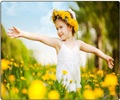The American Heart Association has called upon all to act quickly and work on the chest of a collapsing person. One doesn’t require CPR training to save life, it says.
Even people without CPR training can save the life of an adult whose heart stops, says the American Heart Association.
Cardiopulmonary resuscitation (CPR) is an emergency medical procedure for a victim of cardiac arrest or, in some circumstances, respiratory arrest.CPR is unlikely to restart the heart, but rather its purpose is to maintain a flow of oxygenated blood to the brain and the heart, thereby delaying tissue death and extending the brief window of opportunity for a successful resuscitation without permanent brain damage. Defibrillation and advanced life support are usually needed to restart the heart.
The US association has issued an advisory urging everyone, trained or not, to act immediately in an emergency.
The procedure is simple: If you see an adult collapse after having a heart attack, immediately call for help and then push hard and fast in the middle of the chest continuously, until emergency medical personnel arrive or an external defibrillator can be used.
Dr. Michael Sayre, the lead author of the recommendations, said that the ideal would be 100 pushes a minute with enough force to make the chest go down 2 inches, or about 5 centimeters, but, he added, "there is no need to use a metronome and a ruler." Sayre is an associate professor of emergency medicine at Ohio State University.
CPR, or cardiopulmonary resuscitation, can more than double the survival rate in cardiac arrest, but only about a third of people who collapse get CPR from bystanders.
Advertisement
But the exceptions, Sayre said, are only about a quarter of all cardiac arrests. "We want people to act no matter what," he said.
Advertisement
Chest compression keeps blood flowing, but it does not reoxygenate the blood, as mouth-to-mouth resuscitation does.
The recommendations, being published in the April issue of Circulation, are based on new studies of CPR techniques. They update advisories published in 1997 and 2005.
Numerous studies in animals, and five others in humans, have convinced experts that hands-only
CPR from an untrained bystander is usually as effective as CPR with mouth-to-mouth resuscitation performed by a person trained in the technique.
There may be several reasons. Rescuers performing traditional CPR take longer to start than those who use hands only, maybe because it takes more time to prepare, intellectually and emotionally, for the more complex and intimate procedure. Studies have also shown that bystanders performing conventional CPR interrupted chest compressions for longer than the recommended 10 seconds while doing mouth-to-mouth resuscitation, resulting in fewer compressions.
Surveys suggest there may be reluctance to perform mouth-to-mouth resuscitation because of fear of infection, but this is probably a minor barrier. More commonly, CPR-trained bystanders cite panic and fear of causing further harm as reasons for inaction. Such fears are unwarranted.
"If you do nothing, the person will die," Sayre said. "And you can't make them worse than dead."
Source-Medindia
SRM/N











